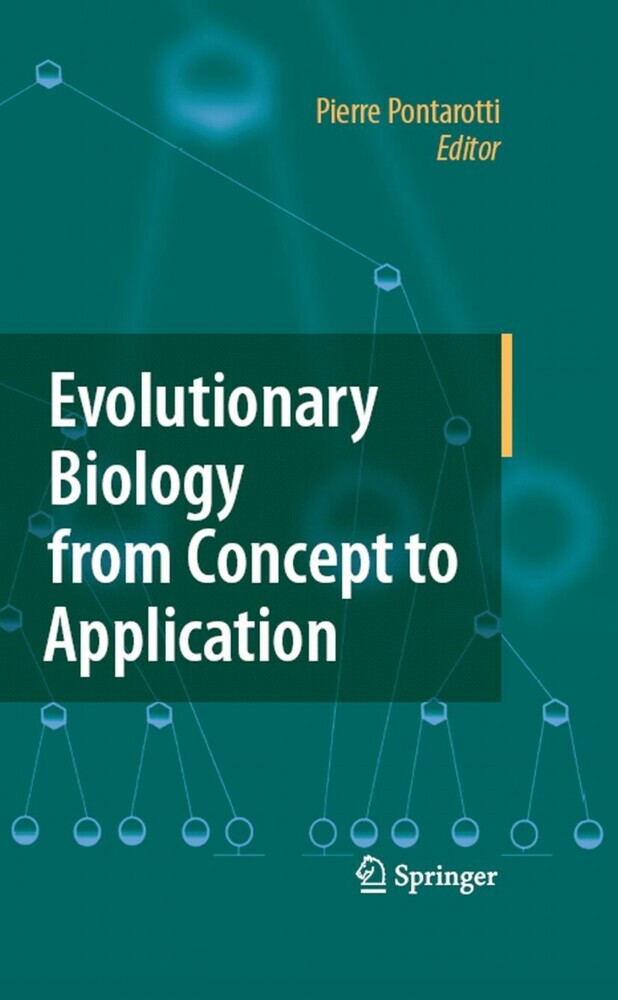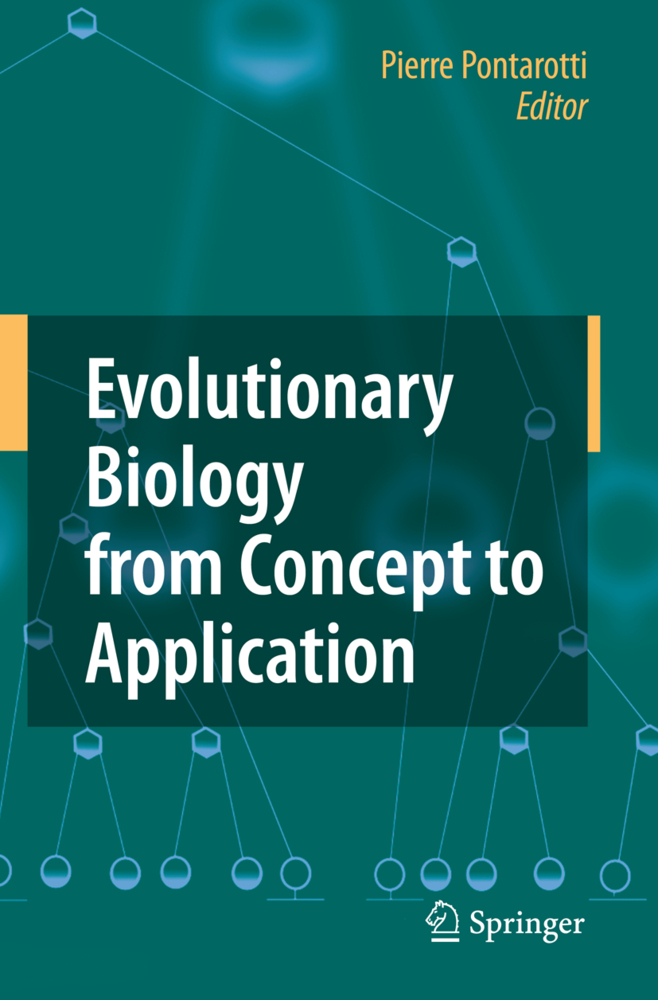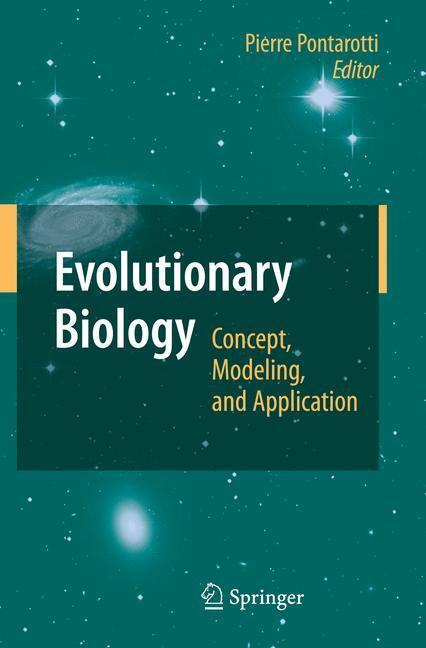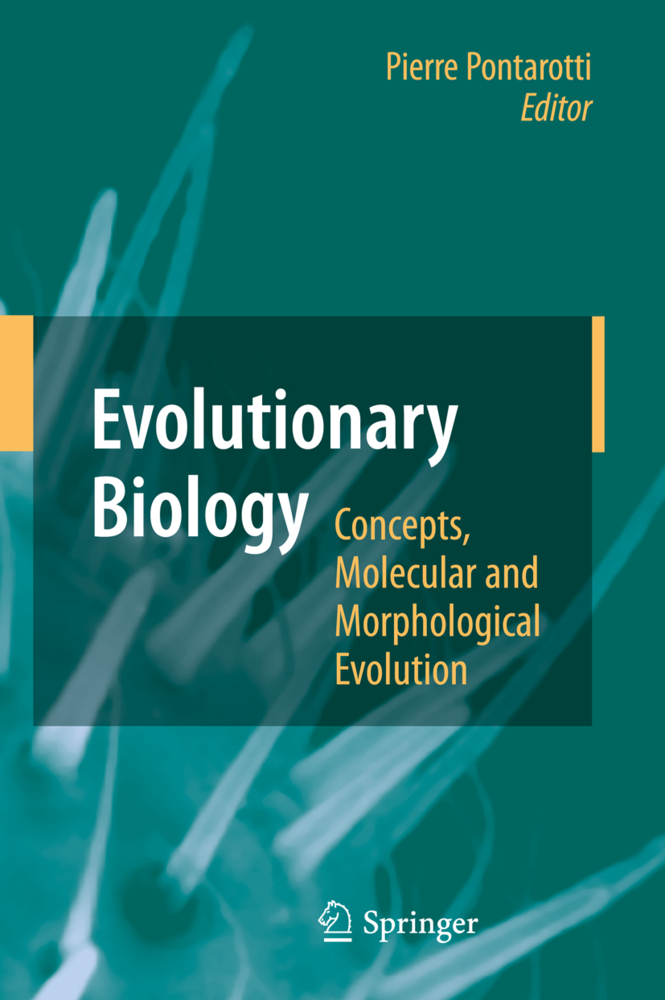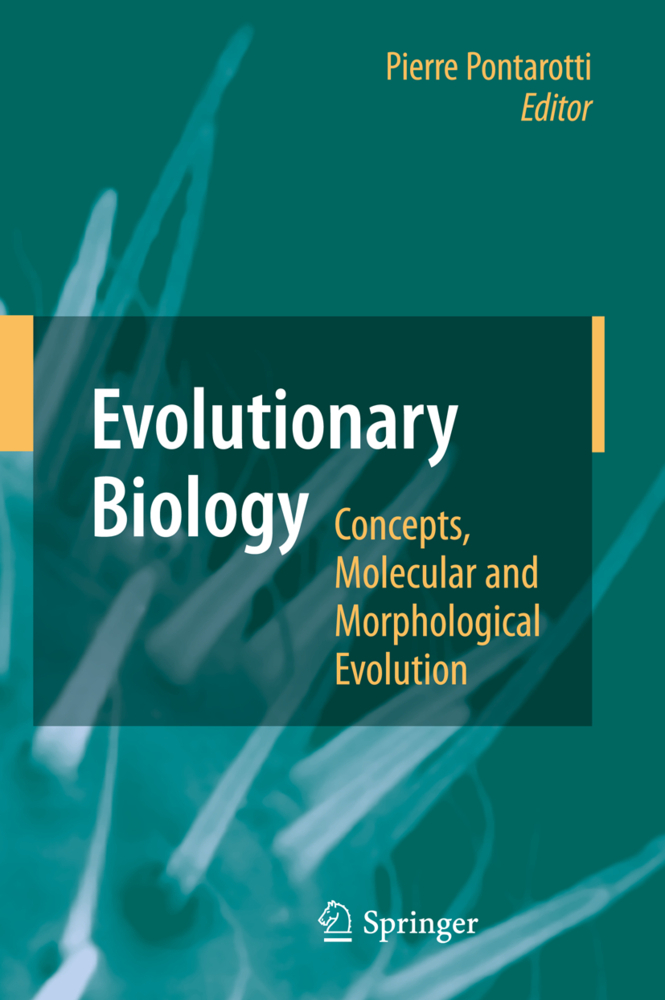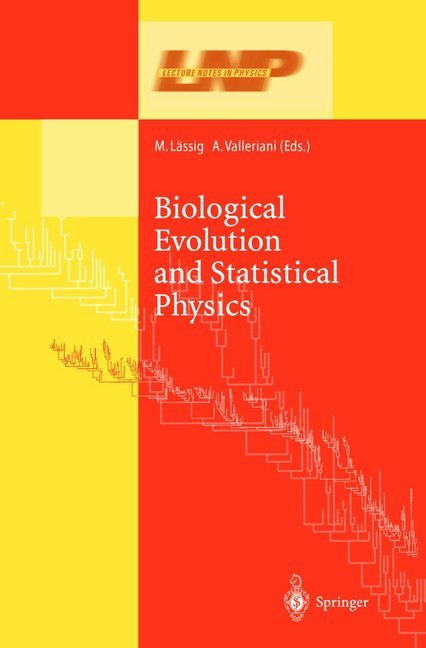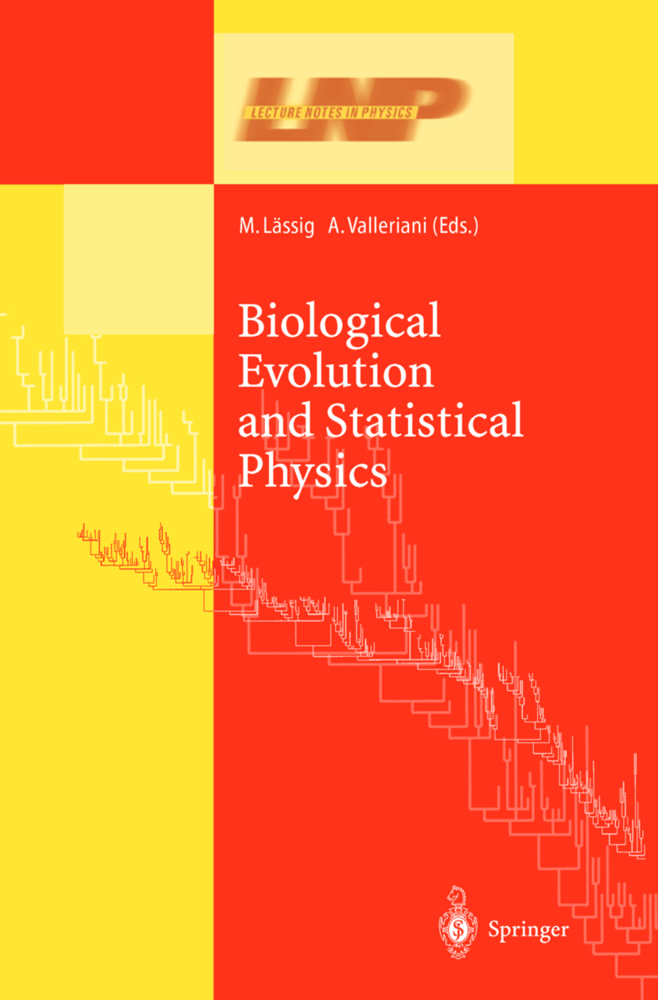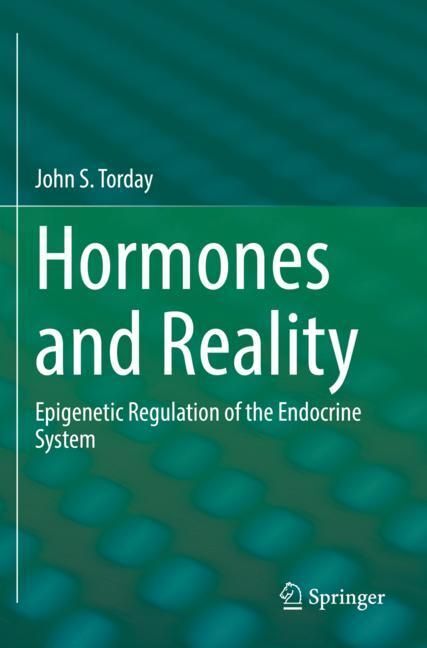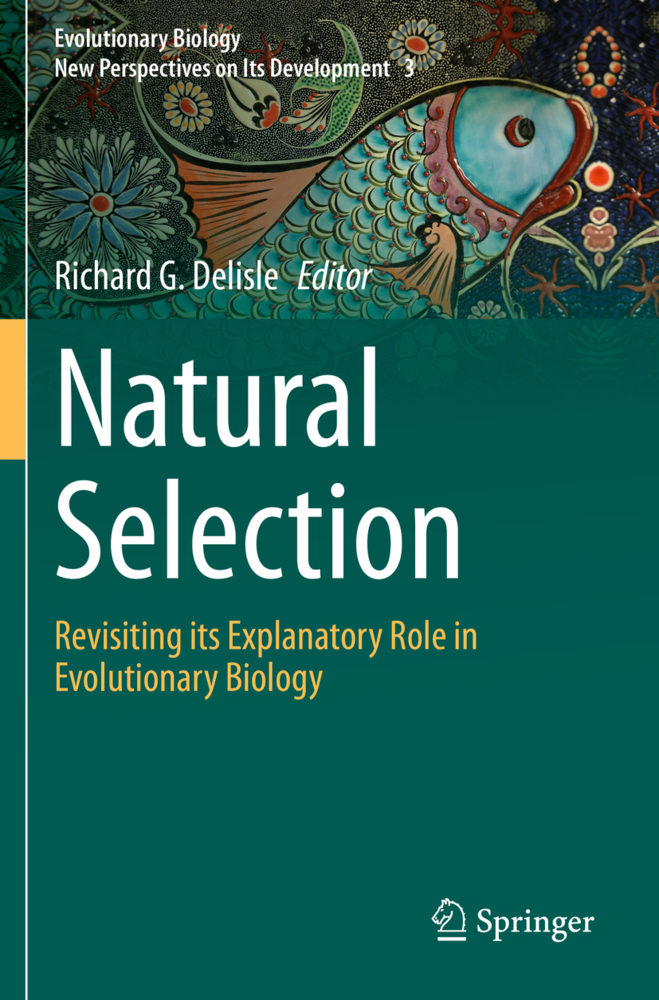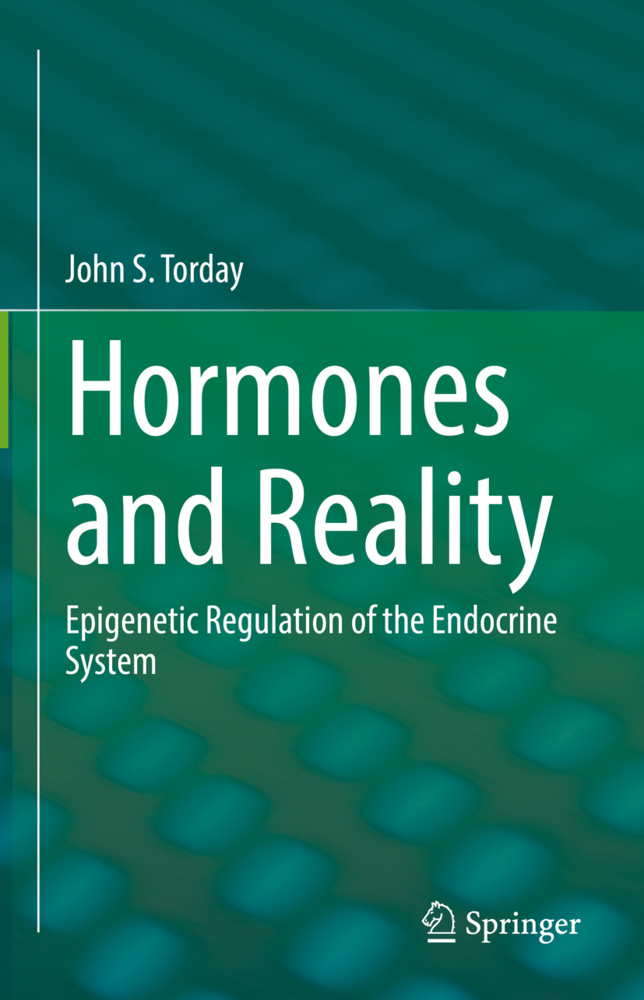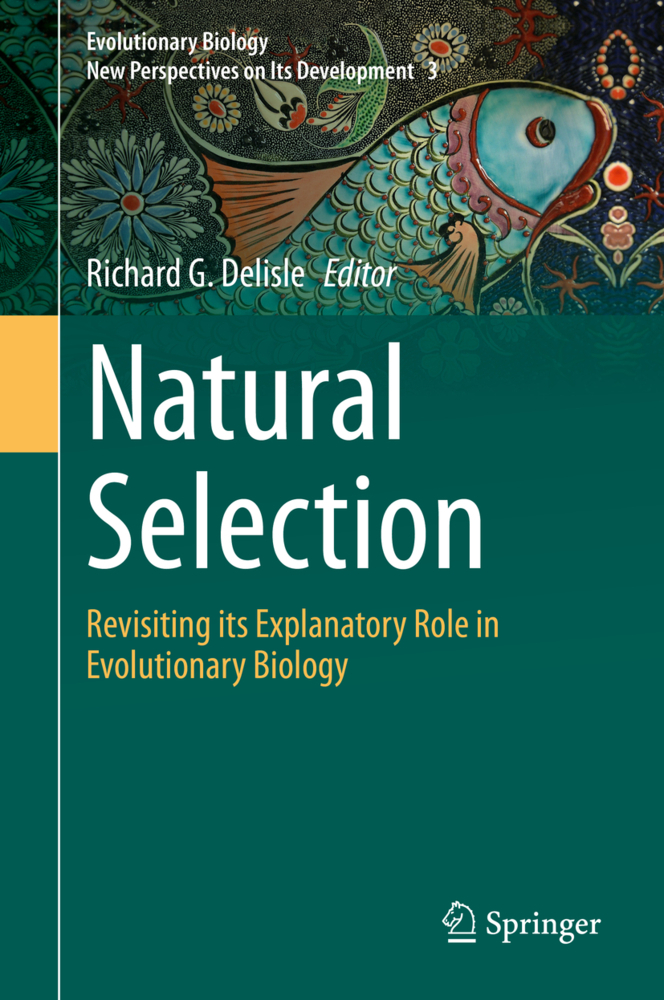Evolutionary Biology from Concept to Application
Every biological system is the outcome of its evolution; therefore, the deciphering of its evolutionary history is of tremendous importance to understand the biology of a system.
Since 1997 scientists of different disciplines have held an annual 'Evolutionary Biology Meeting' at Marseille (France) in order to discuss their research developments, exchange ideas and start collaborations. Consisting of the most representative talks of the 11th meeting, this book provides an up-to-date overview of evolutionary concepts and how these concepts can be applied to a better understanding of various biological aspects. It is divided into the following four parts: Modelization of Evolution - Concepts in Evolutionary Biology - Knowledge - Applied Evolutionary Biology.
This book is an invaluable source of information not only for evolutionary biologists, but also for biologists in general.
1;Preface;5 2;Contents;7 3;Contributors;9 4;I Modelization of Evolution;12 4.1;Rate of Adaptation of Large Populations;13 4.1.1;1.1 Background and Introduction;13 4.1.2;1.2 Two Models;18 4.1.3;1.2.1 Strong Selection Model;19 4.1.4;1.2.2 Weak Selection Model;21 4.1.5;1.3 Strong Selection: Asymptotic Adaptation Rate;24 4.1.6;1.4 Weak Selection: Girsanov Calculations;27 4.1.7;1.4.1 The Girsanov Transform;27 4.1.8;1.4.2 Moments of the Neutral Process;30 4.1.9;1.4.3 Representation Using the Neutral Process;32 4.1.10;1.5 Open Problems;35 4.1.11;References;36 4.2;A Phylogenetic Mixture Model for Heterotachy;38 4.2.1;2.1 Introduction;38 4.2.2;2.2 Branch Length Sets Mixture Model;40 4.2.3;2.3 Model Testing;41 4.2.4;2.6 Application to Published Data Sets;43 4.2.5;2.7 Results 2.7.1 Four -Taxon Simulation;44 4.2.6;2.7.2 Seventy-Taxon Simulation;45 4.2.7;2.7.3 Application to Real Data;45 4.2.8;2.8 Discussion;46 4.2.9;References;49 5;II Concepts in Evolutionary Biology;51 5.1;Accelerated Evolution of Genes of Recent Origin;52 5.1.1;3.1 Introduction;52 5.1.2;3.2 Results 3.2.1 De . nition of Groups of Genes of Different Age;55 5.1.3;3.2.2 Evolutionary Rate of Genes of Different Age;55 5.1.4;3.2.3 Length of Genes of Different Age;58 5.1.5;3.2.4 Functions of Primate Genes of Different Age;58 5.1.6;3.2.5 Estimation of the Age of Genes;60 5.1.7;3.3 Discussion 3.3.1 Differences between Genes of Different Age;61 5.1.8;3.3.2 Properties of Novel Genes;62 5.1.9;3.3.3 Hypotheses to Explain the Origin of Novel Genes;63 5.1.10;3.4 Conclusion;64 5.1.11;References;65 5.2;Life-Cycle Features of Tumour Cells;67 5.2.1;4.1 Introduction;67 5.2.2;4.2 From Embryonal to Stem Cell Theories of Cancer;68 5.2.3;4.3 Cancer Testes Antigens: Expression in Tumour and Germ Cells;69 5.2.4;4.4 From Mitosis to Polyploidy and Life Cycles;69 5.2.5;4.5 Endomitosis: The Earliest Evolutionary Analogue of Meiosis;71 5.2.6;4.6 Endomitotic Tumour Cells Express Meiotic Kinases;71 5.2.7;4.7 Genetic Consequences of Reproductive Polyploidy in Tumour Microevolution;71 5.2.8;4.8 Do Tumour Cells Display Life-Cycle Behaviour Similar to that of Unicellular Protozoans?;72 5.2.9;4.9 Role of p53;74 5.2.10;4.10 Adaptive Paleogenesis in Tumours;74 5.2.11;4.11 Conclusion;75 5.2.12;References;75 5.3;General Evolutionary Regularities of Organic and Social Life;78 5.3.1;5.1 Introduction;78 5.3.2;5.2 Processes of Polymerization in Foraminiferal Development;82 5.3.3;5.3 Processes of Differentiation in Foraminiferal Development;84 5.3.4;5.4 Processes of Integration in Foraminiferal Development;86 5.3.5;5.5 Aromorphoses in Foraminiferal Evolutionary Development;89 5.3.6;5.6 General Character of the Main Evolutionary Regularities 5.6.1 Different Levels of the Organization of Matter;90 5.3.7;5.6.2 Processes of Polymerization, Differentiation, and Integration in the Development of Human Society;91 5.3.8;5.6.3 Processes of Polymerization, Differentiation, and Aromorphoses in the Development of the Material Objects of Social Integrative Systems;94 5.3.9;5.7 Conclusions;95 5.3.10;References;96 5.4;Old and New Concepts in EvoDevo;100 5.4.1;6.1 Introduction;100 5.4.2;6.2 Two Different Approaches to Development and Evolution;101 5.4.3;6.3 Homology, Modularity, Developmental Networks;103 5.4.4;6.4 Can NeoDarwinism Provide a Theory of EvoDevo?;105 5.4.5;6.5 EvoDevo Beyond NeoDarwinism;106 5.4.6;6.6 EvoDevo and the Traditional Taxonomy of Protochordates: Current Achievements and Historical Roots;110 5.4.7;6.7 An Alternative View on the Phylogeny of Protochordates and the Origin of Vertebrates;114 5.4.8;References;115 6;III Knowledge;120 6.1;Overturning the Prejudices about Hydra and Metazoan Evolution;121 6.1.1;7.1 Diffusion: Potentially an Ideal Mechanism for Material Transport in Primitive Metazoans 7.1.1 A Theoretical Consideration;121 6.1.2;7.1.2 Problems of the Diffusion Paradigm";122 6.1.3;7.1.3 Is Diffusion Powerful Enough for Circulation in Hydra?;124 6.1.4;7.1.4 Is Diffusion Powerful enough for Digestion in
Pontarotti, Pierre
| ISBN | 9783540789932 |
|---|---|
| Artikelnummer | 9783540789932 |
| Medientyp | E-Book - PDF |
| Auflage | 2. Aufl. |
| Copyrightjahr | 2008 |
| Verlag | Springer-Verlag |
| Umfang | 220 Seiten |
| Sprache | Englisch |
| Kopierschutz | Digitales Wasserzeichen |

